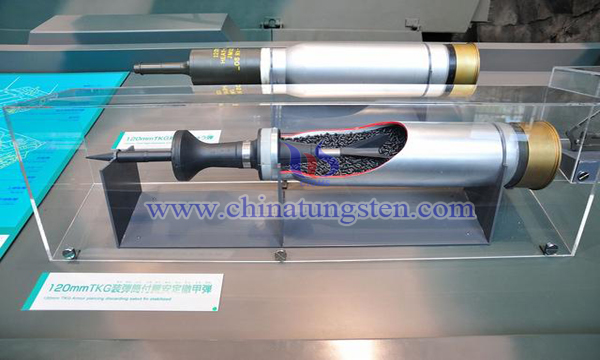Preparation Process of Tungsten-based heavy alloy core material
- Details
- Category: Tungsten Information
- Published on Wednesday, 14 August 2019 01:09
Depleted uranium composites are the most excellent penetrating core materials due to their excellent self-sharpness. In the early 1990s, based on the international public opinion and environmental pressure caused by the toxicity of depleted uranium materials, the United States began to develop an alternative uranium armor piercing core. material. On the basis of the tungsten-nickel-iron heavy alloy, the researchers designed a tungsten-based heavy alloy armor-piercing projectile through the change of the microstructure of the alloy, but there is still a big gap between the self-sharpening effect of the depleted uranium alloy.
At present, the main way to improve the armor-piercing power of the traditional W-Ni-Fe heavy alloy is to swallow the sintered alloy and carry out deformation strengthening to improve the dynamic yield strength of the tungsten-based heavy alloy, thereby improving the adiabatic shear. Sensitivity is the purpose of strengthening the self-sharpening ability of tungsten alloys. However, the large deformation usually causes the overall elongation (ie, toughness) of the tungsten-based heavy alloy bar to decrease sharply, increasing the risk of breaking the armor-piercing projectile material during launch and target.

With the increasing protection of modern armor, the development direction of armor-piercing projectiles is the use of high-pressure, high-speed launch conditions and large aspect ratio core materials. In order to meet the above requirements, a high dynamic yield strength (high hardness) and high toughness tungsten-based heavy alloy core material has been developed. Researchers use this idea to design tungsten alloy materials:
50% of the 2.5-micron molybdenum powder was first ball milled with the simmered alumina powder for 3 hours. A sintered 92W-5.6Ni-2.4Fe alloy rod having a diameter of 12 mm was embedded in a molybdenum boat or a corundum boat containing Mo powder + alumina powder, and was placed in a vacuum furnace using a molybdenum sheet or a tungsten sheet as a heating element. The air in the furnace was evacuated to below 5 Pa, and the temperature was raised to 1,350 ° C at a rate of 10 ° C / minute, and the temperature was kept for 2 hours, and the furnace was cooled to room temperature. From the surface of the alloy rod to 2.5 mm below the surface layer, the microhardness of the alloy rod was continuously reduced from 380 HV to 220 HV.
Since tungsten-based heavy alloys are usually sintered in a hydrogen-containing atmosphere, hydrogen embrittlement is usually caused. As a material for armor piercing core, it is generally required to perform vacuum dehydrogenation treatment on a tungsten-based heavy alloy rod. In order to reduce the manufacturing cost and simplify the manufacturing process, the degree of vacuum of the alloy rod is strictly controlled. Finally, a tungsten-based heavy alloy core with high dynamic yield strength (high hardness) and high toughness is obtained by the core of the tungsten-based heavy alloy rod, the gradient distribution region with continuous hardness change, and the reasonable matching of the surface.
- Tungsten Alloy Manufacturer & Supplier, Chinatungsten Online: www.tungsten-alloy.com
- Tungsten News & Prices of China Tungsten Industry Association: www.ctia.com.cn
- Molybdenum News & Price: news.molybdenum.com.cn
- Tel.: 86 592 5129696; Fax: 86 592 5129797; Email: sales@chinatungsten.com



 sales@chinatungsten.com
sales@chinatungsten.com